GC-MS Aroma Designer is Playing an Important Role in the Analysis of Aromas, which are Key to the Taste of Wine
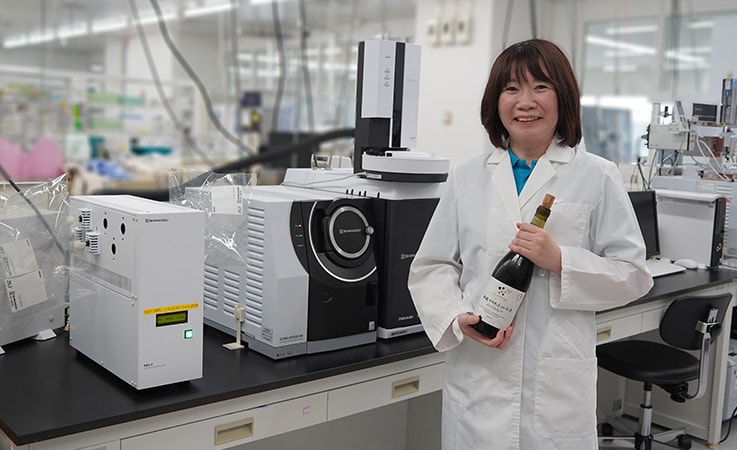
Kanako Sasaki of the Institute for Future Beverages, Research & Development Division, Kirin Holdings Company, Limited (Kanagawa Prefecture, Shonan iPark). The photo shows Aroma Designer, a gas chromatograph mass spectrometer (GC-MS) specialized for aroma analysis.
Shimadzu Corporation, in collaboration with Iwate University, has developed Aroma Designer, a gas chromatograph mass spectrometer (GC-MS) specialized for aroma analysis. It was introduced at the Institute for Future Beverages at Kirin Holdings Company, Limited, where it plays an active role in technological developments involving wine and beer.
The Complicated and Profound World of Odors
The sense of smell is said to be the least studied of the five senses. The reason is that odors are complicated. The world is filled with odors ranging from aromas, which give us a pleasant sensation, to stenches, which are perceived as unpleasant. But what exactly are odors? The answer is that they are volatile chemical substances, odor molecules, if you will. Such molecules number in the hundreds of thousands. The characteristics of an odor come from the combination of dozens to hundreds of such odor molecules.
For example, the stuffy stench of socks comes from isovaleric acid, while the aroma of vanilla comes from vanillin. When these are combined, we get the aroma of chocolate. In addition, when the concentrations of the same odor molecules change, the odor also changes. Skatole, a compound extracted from animal excrement, has a stench of feces. However, when the concentration is reduced, it changes to a fresh smell similar to mint. In addition to such complexities, these sensations and preferences differ depending on the person, making objective evaluations difficult, which is one reason why the analysis of odors is so difficult.
The Difficulty of Measuring Odors
A variety of approaches and instruments have been developed for the objective evaluation of such odors. In terms of instruments, components in samples as well as their concentrations are analyzed using GC-MS. The method used to determine what odors are associated with these components is to ask people to sniff the components eluted from the GC-MS column in sequence. This is called the odor-sniffing method.
In contrast, the omission method is effective for odors formed by the combination of multiple components. In this approach, a single component is omitted, and the subject decides whether their perception of the odor has changed. However, odors are formed from the combination of hundreds of components. The process of investigating all the components in a sample, preparing each individual component, and then sniffing and comparing samples with the components omitted, in sequence, has been a daunting task.
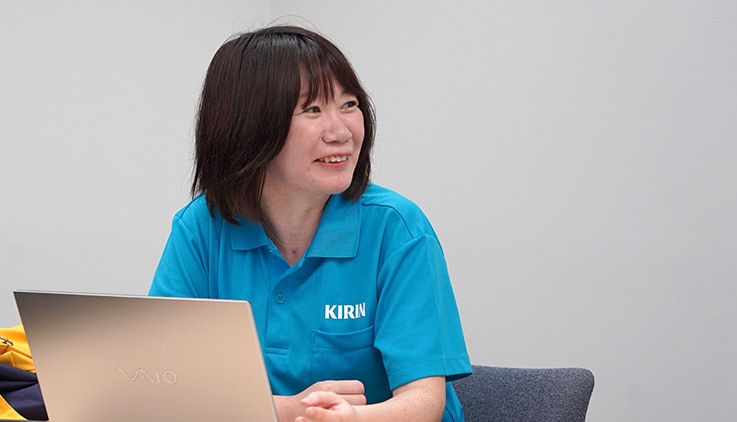
Shimadzu Corporation, in collaboration with Iwate University, has developed Aroma Designer, a GC-MS specialized for aroma analysis. The odor components are isolated by the gas chromatograph (GC), and only the components that the analyst wishes to extract are sent to the mass spectrometer (MS). The analysis sample is created by collecting the remainder in a fragrance bag.
Kanako Sasaki (Institute for Future Beverages at Kirin Holdings Company, Limited), who decided to introduce the instrument, noted that when she learned of this principle, “it was an eye opener, as I had no idea that such an approach existed! Aroma Designer dispels the notion that GC-MS is an instrument used only for analysis, and does everything up to automation of pretreatment. It’s truly a new way of seeing things,” she said.
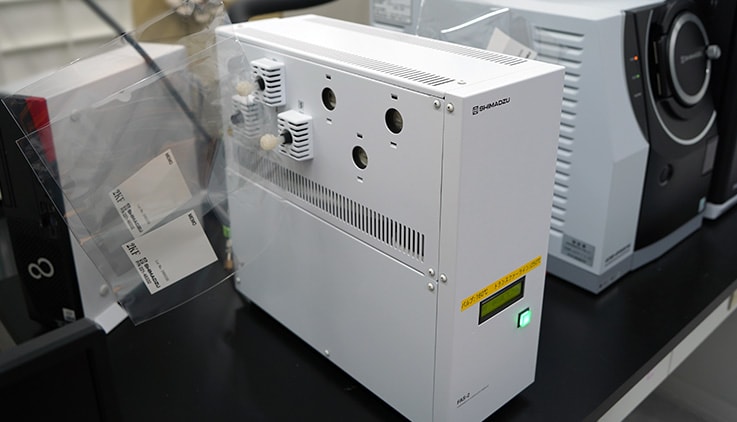
GC-MS Aroma Designer Fragrance Bag
Sasaki is responsible for wine beverages, and is developing techniques for modifying the aromatic components that characterize wine in the grape cultivation and wine distillation processes.

“For some time, I’ve wanted to pursue research into composite aromas formed from the combination of various components. In the study of composite aromas, although odors are perceived, many times it is not clear which components are contributing to the odor. I decided to introduce Aroma Designer because in addition to speeding up analysis by easily performing pretreatment, it was evident that the desired data is obtained by using it. A system that automatically removes the components that the analyst wishes to extract is priceless.”
Using Aroma Designer, Sasaki was able to identify the components that contribute to the aroma of the ripened fruit in Muscat Bailey A Wine, a type of grape used in Japan’s leading red wines. She presented her findings at the 75th ASEV National Conference, convened in the USA by the American Society for Enology and Viticulture in June 2024. Now it is being used not only to study wine but also beer.
Further Breakthroughs Expected in Odor Analysis
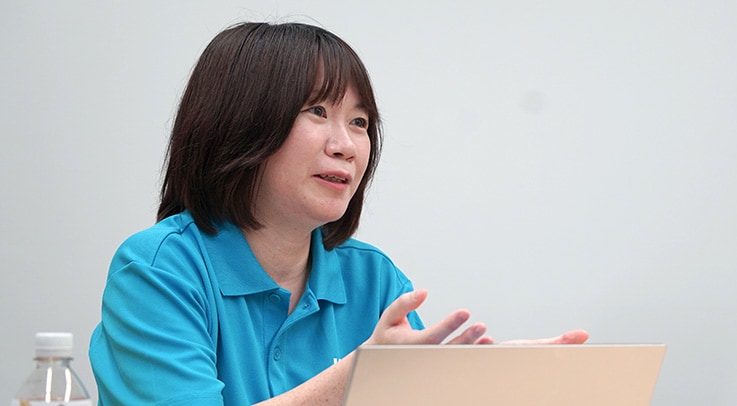
“Odor research is in development, and much remains to be explained. Software that assists with research, such as programs with enhanced library functions that can compare analysis results with odor components, would be great. In addition, I’ve heard that Shimadzu is also conducting brain function research. Sensory tests are indispensable for odor analysis, but they tend to lack consistency. I hope that by using new technology, it will become possible to obtain objective evaluations of sensations and preferences.”
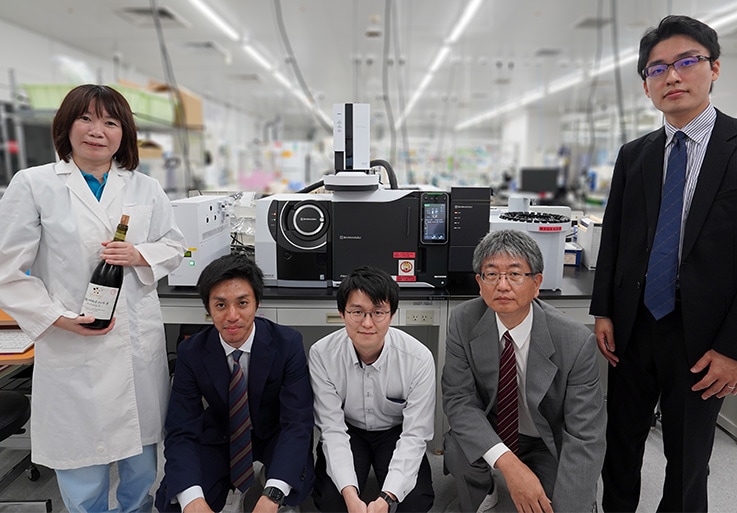
From the left, Kanako Sasaki of Kirin Holdings Company, Limited, Kazuhiro Kawamura, Yu Nagao, and Motoo Kinoshita of Shimadzu’s Analytical & Measuring Instruments Division, and Hiroyuki Yamaguchi of Shimadzu’s Sales & Marketing Division

Château Mercian, Japanese New Wine, Yamanashi Muscat Bailey A 2024. Available for purchase (while supplies last) from Château Mercian Katsunuma Winery in Koshu City, Yamanashi Prefecture
Comments by Sasaki: “Every year, on November 3, which is the release date for Yamanashi Nouveau, a “Japanese New Wine, Yamanashi Muscat Bailey A” is announced. This new wine uses Muscat Bailey A grapes as the raw material, the aroma of which is being studied at the Institute for Future Beverages. It is my hope that Aroma Designer will continue to be used to advance the study of aroma, to deliver delicious wines to dining tables everywhere.”
Related Links
- Kirin Holdings Company, Limited
- Château Mercian
- Article by Professor Masao Miyazaki of Iwate University
Journal : Chemical Senses (Volume 49, 2024) Name of Article : Development of the gas chromatography/mass spectrometry-based aroma designer capable of modifying volatile chemical compositions in complex odors Authors : Kaname Obara, Reiko Uenoyama, Yutaro Obata, Masao Miyazaki
 Page Title and URL Copied.
Page Title and URL Copied.


